It’s been about 20 months since I built what is currently my primary home / self defense and general purpose range rifle, my 16″ Midlength AR-15. Since it’s nearing the end of the 2015 year, I figure it would be an interesting exercise to do a “State of the Rifle” write-up to break down the changes I have made to the gun from when it was originally built.
The following table is a summary of parts used to build the rifle originally and what parts currently comprise the rifle now.
| Part | Original | Now | Same or Changed |
|---|---|---|---|
| Lower Receiver | Colt Sporter Lightweight | Colt Sporter Lightweight | Same |
| Upper Receiver | VLTOR MUR-1A w/ FA | VLTOR MUR-1A w/ FA | Same |
| Barrel | FN 16" midlength 1-7" CHF/CL 5.56 NATO | BCM 16" midlength 1-7" CHF/CL 5.56 NATO | CHANGED |
| Handguard | BCM 13" KMR | BCM 13" KMR | Same |
| Gas Block | BCM Low Profile | BCM Low Profile | Same |
| Gas Tube | Spike's Tactical Melonite Coated | Spike's Tactical Melonite Coated | Same |
| Muzzle Attachment | A2 Flash Hider | BCMGUNFIGHTER Compensator MOD 0 | CHANGED |
| Bolt Carrier Group | Spike's Tactical phosphate | Spike's Tactical Nickel Boron | CHANGED |
| Charging Handle | BCMGUNFIGHTER MOD 4 | BCMGUNFIGHTER MOD 4 | Same |
| Trigger | Geissele Hi-Speed National Match Service Rifle (Large Pin) | Geissele SSA-E (Large Pin) | CHANGED |
| Trigger Guard | Colt stock/original | Seekins Precision billet | CHANGED |
| Safety | Colt stock/original | Seekins Precision 60/90 degree | CHANGED |
| Magazine Release | Colt stock/original | Colt stock/original | Same |
| Bolt Catch | Colt OEM replacement | Colt OEM replacement | Same |
| Grip | MagPul MOE+ | MagPul MOE+ | Same |
| Stock | MagPul UBR | MagPul UBR | Same |
| Buffer | BCM Carbine | Spike's Tactical ST-T2 | CHANGED |
| Primary Sight | Aimpoint Micro T1 2MOA w/ LT-660 mount | Aimpoint Micro T1 2MOA w/ LT-660 mount | Same |
| Backup Iron Sights | None | KAC 600M Micro Rear and KAC Micro Front | CHANGED |
A major change that took place since I originally put the rifle together is the replaced barrel. The crux of the matter is that around the 4000-5000 round mark, I started getting some weird keyholing even at short range (10 to 15 yards) which I noticed during speed and transition drills. I then realized I had ‘jacket strikes’ on the exit hole of the Battlecomp 1.0 muzzle brake.
Note that I had originally put an A2 flash hider on the rifle, but a few months later decided to try out a true muzzle brake to get some added recoil reduction.
I ended up swapping out for another Battlecomp, thinking the Battlecomp was bad, and the keyholing with exit hole strikes on the Battlecomp 1.0 continued after a few hundred rounds. I then swapped out for a BCMGUNFIGHTER Compensator MOD 0. The keyholing continued to my dismay (but without any apparent jacket strikes against the exit hole of the BCM compensator). It seemed to happen after the barrel started to get really hot. I then figured the barrel itself must be bad, so I ordered a BCM barrel of the same exact specifications as the FN barrel: 16″ 1-7″ midlength, cold hammer forged, chrome lined, in 5.56 NATO.
I’m fairly confident the BCM barrel is actually a rebranded / contracted FN barrel. As far as why I went with BCM as opposed to getting another FN barrel, there was no particular reason other than the fact I was already needing to order some other parts from BCM at the time, so I decided to just get a barrel from them.
The keyholing problem finally discontinued, and I’m guessing that I wrecked the FN barrel with some hard shooting. I do shoot all outdoors (since my gun club’s range facility is outdoors) and in Southern California summer heat under the sun, guns can get quite hot, especially when you run them hard.
But with about 2000 rounds through the BCM barrel, all is well. Hopefully I don’t prematurely toast this barrel. Note that I ended up sticking with the BCMGUNFIGHTER Compensator MOD 0 muzzle brake and didn’t go back to the Battlecomp 1.0. The BCMGUNFIGHTER works well, and I didn’t feel like spending another ~$150 to get a replacement Battlecomp.
Going back to the A2 flash hider swap out for a muzzle brake, I did that for recoil mitigation and I found that both the Battlecomp and BCMGUNFIGHTER brakes offered enough recoil mitigation over the A2 flash hider, specifically in rapid fire, fast transition drills, to justify the high cost brakes over the old school A2 flash hider.
The Spike’s Tactical Nickel Boron bolt carrier group is actually the most recent change I made, and it honestly wasn’t really worth the money vs the same Spike’s Tactical BCG in phosphate. I did it mainly because I have never run a non-phosphate BCG, so I wanted to see what the fuss is about. I go through some thoughts and opinions in detail in my recent Mini-Review of the Spike’s Tactical NiB BCG, so you can read more there.
I love my Geissele Hi-Speed National Match Service Rifle trigger. It was the trigger I put on my competition rifle when I first started shooting competitive NRA/CMP High Power Service Rifle and I believe it helped me go Distinguished Rifleman. Yes, shooter skill is the main factor, but having a quality trigger makes sure the rifle doesn’t hinder performance.
But I swapped out for the Geissele SSA-E trigger mainly because I was really putting the gun through harder use (e.g. lots of rounds in a short amount of time). The Hi-Speed NM SR trigger is an adjustable design with screws to adjust the 2nd stage pull weight and over travel. With these extra parts, I feel there is the slightly added chance for failure with hard use. Granted, I have many thousands of trigger pulls on this trigger without issue (and I had actually never changed out the hammer and sear springs for 7-8 years), but the type of shooting I used it for was low volume (50 and 80 round matches).
So I felt like getting the SSA-E with a fixed design would offer me a more robust, hard-use, combat application trigger.
One important thing to also note is that the Geissele Hi-Speed National Match Service Rifle trigger’s hammer does not have a J-spring. Usually, there is a J-spring in the hammer which retains the hammer pin. So the hammer pin on the Geissele Hi-Speed NM SR trigger can walk. Obviously, in NRA/CMP High Power competition, this isn’t a big deal since there is a low volume of fire. But for ‘duty’ use, this could be a problem. During weapons manipulation drills, carbine classes, and what not, the Hi-Speed NM SR trigger did walk enough during use that I felt a J-spring hammer would be beneficial in this type of rifle application.
Plus, the SSA-E has a 3.5lb trigger pull weight vs the 4.5 trigger pull weight of the Hi-Speed National Match.
I swapped out the Colt factory original safety selector for the Seekins Precision 60/90 degree safety selector. I had seen it at SHOT Show 2015 at the beginning of the year and was very intrigued by it.
I know there are other short throw style safety selectors around already, but I know Seekins Precision makes a quality product, especially since I had already acquired their billet trigger guard.
- Colt factory / original
- Seekins Precision billet
I ended up changing from the Colt factory original trigger guard for the Seekins Precision billet trigger guard so I could get rid of the gap between the trigger guard and pistol grip. This was eating into the knuckle of the middle finger of my shooting hand, even with gloves. This upgrade was definitely worth the cost and made a world of difference as far as comfort.
The change of buffer was more of an experiment than anything. Going with a heavier buffer is usually something done on 16″ or shorter barrels with carbine length gas systems due to the hard cycling of the gun. But with a midlength, it’s usually not a requirement. I ended up acquiring a Spike’s Tactical ST-T2 which is a ‘heavy’ weight buffer at 4.05 ounces vs the 2.9 ounces of the standard carbine buffer. I saw no gains from this change, but I ended up leaving the ST-T2 in the rifle since I had already picked it up and it didn’t have negative impact on the gun’s performance.
The addition of the Knights Armament Company Micro sights on the rifle was more for backup than anything else. I run the Aimpoint Micro T-1 as the primary sighting system, but given that batteries die and electronics can fail, I figured having Backup Iron Sights (BUIS) would be prudent. I bought the KAC Micro sights because of their reputation as durable sights and because of the adjustable elevation on the rear sight.
The 200M to 600M range of adjustment on the rear elevation extends my effective range with more accuracy since I don’t need to hold over with the T-1 to take a longer range shot. Since my T-1 is zeroed for 50 yards (with the theoretical 200 yard battle zero), making a 500 yard or 600 yard shot with the T-1 takes a lot of guess work and hold over. But with the KAC Micro 600M rear, I can just dial in 500 or 600 and go from there.
Aside from the actual rifle parts, there are some minor tweaks I made to the gun with regards to accessories and fitting the rifle for me.
For one, I did change slings. I started off running a single point MagPul MS4 with QD swivel attached to the UBR stock. But I found that the single point sling just didn’t feel right to me. It’s ‘fast’ as far as being able to quickly maneuver the rifle around the body (e.g. shoulder transitions). But I could not figure out a good way to attach the single point such that doesn’t hinder my firing hand from getting the correct grip on the gun after shouldering for a shot, while at the same time, being comfortable against the body while the rifle is at rest (hanging freely).
Thus, I went to a two-point Blue Force Gear Vickers Combat Application Sling (VCAS) and have been running that ever since. It offers great comfort for a carry / retention sling, and can quickly adjust to reduce hinderance during fast, dynamic shooting situations.
Secondly, I did change go through a couple changes on the fore grip. I started off with a BCM short vertical foregrip (Keymod). While the BCM short VFG offered a decent reference point to index the support hand, I never used it as a vertical foregrip, but more as a quasi handstop. Not to mention the short VFG got in the way if I wanted to rest the rifle on a rucksack, sandbag, or other makeshift support in a prone or other shooting position for an accurized shot.
I then moved to a Knights Armament Company hand stop since it is extremely low profile, allowing for resting the rifle on makeshift support items. But the hand stop itself offered minimal hand stop capabilities.
Then Haley Strategic Partners (HSP) came out with the Kinesthetic Angled Grip (KAG) with a Keymod mount version. I jumped on the KAG as it seemed to offer a better foregrip accessory that would provide what I really wanted out of a vertical foregrip, but with a lower profile of a basic handstop. It has seemed to fit the bill with these regards and the HSP KAG remains on my rifle.
A minor tweak I made was moving the HSP Thorntail light mount and SureFire P2X Fury Defender from the left side of the gun to the right side. My initial reasons for mounting the light on the left side was so I could use the light as a barricade rest, if for instance I am taking a shot through a door or window. I could then jam the light into the door frame or window frame, using the wall for cover (since I’m a right handed shooter) and only exposing the barrel and a minimal amount of my body.
I then decided to switch it to the right side so the light wasn’t an issue when the rifle is at rest (hanging freely) while slung on the body and hitting my knees or legs. Then being a right handed shooter, I could also use the light around corners, window frames, or door frames with the bare minimum exposure of my body. These combined with the fact that there are other ways to support a rifle against a door or window frame other than using the weapon light as jammed support, gave me incentive to try running the light on the right side. I have left it on the right since I haven’t found any negative aspects to warrant switching it back to the left side of the rifle.
I also modified the MagPul UBR by tapping the sling swivel mount channel for a Grovtec limited rotation sling swivel cup. In a previous blog post and video, I discussed why I wanted a limited rotation sling swivel cup, but essentially, I got tired of the sling from becoming twisted after I slung/unslung/reslung the rifle during my range sessions. Definitely a modification I highly recommend for anyone running a two point sling with QD swivels.
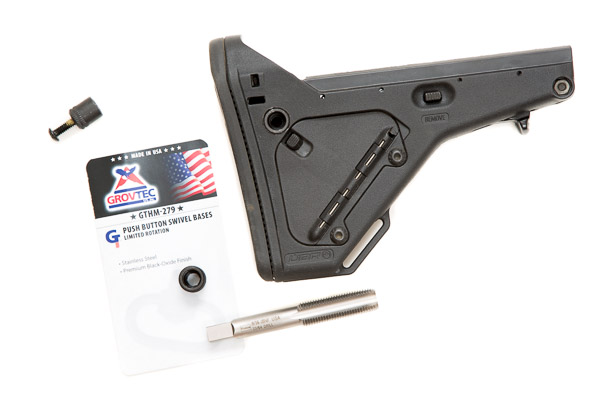 Lastly, I am running the UBR stock more extended and the handstop farther out on the handguard. The MagPul UBR has 7 positions. Since I have my degree in Computer Science, I’ll call them positions 0 through 6. 0 is fully collapsed and +6 is fully extended.
Lastly, I am running the UBR stock more extended and the handstop farther out on the handguard. The MagPul UBR has 7 positions. Since I have my degree in Computer Science, I’ll call them positions 0 through 6. 0 is fully collapsed and +6 is fully extended.
Initially, I ran the UBR stock fully collapsed at position 0 with the VFG fairly forward. I then found myself extending the stock to +1, and moved the VFG one Keymod notch backwards.
Then after subsequent range trips, I kept extending the UBR stock an additional position finally settling at +3, and then moving the handstop farther out again.
After several months running the UBR stock at +3, I finally moved it to where it’s at now which is +4 (or 4 clicks from fully compressed), which means I have two more notches to reach full stock extension. I have also moved the HSP KAG one more notch further away on the handguard.
Why am I to this point? I think the 3-gun shooters have it right when it comes to running long stocks. Getting the pistol grip of the rifle extended away from the body for dynamic shooting gives a lot of extra ‘leverage’ on the rifle. You can drive the gun easier, faster, and more effectively/accurately, especially when fatigued. Frank Proctor has been promoting running a collapsible stock fully extended and I never understood why for the longest time. But I have finally realized the benefits after many range sessions and countless drills. I don’t think I’ll run fully extended. I’m shorter than the average male, so +4 on the stock is pretty long for me without going to a fully predominantly bladed shooting position. I think I’ll remain at the +4 stock position well into 2016.
There’s only a couple things I might change on my rifle in the future. For one, I was considering going to a 15″ KMR so I could run a SureFire X300 Ultra at the 12 o’clock position, directly on the Picatinny rail. This would require me to move my front sight rearward so it’s behind the X300U. I wanted to experiment with having a flashlight over the bore, as opposed to offset, and the X300U is actually a smaller form factor than a P2X Fury Defender, with more lumens (the current X300U outputs 600 lumens and the P2X Fury Defender outputs 500 lumens).
Another idea I have been continuously revisiting is getting an Aimpoint 3x magnifier on the Larue pivot mount. I try to convince myself to get one so I could get the enhanced vision if I needed it, but then I thought to myself that most of the time it would be flipped over to the side so it’s not being used due to CQB and close range rapid engagements. The fact that it’s an additional $700 to put into the gun also keeps me from going in on it.
That is essentially the state of my 16″ AR-15 home/self defense and range rifle. Hopefully this gives some insights and ideas for those out there putting together an AR-15 or figuring out ways they can improve their existing rifle.
For the TL;DR crowd, I have a video of my State of the Rifle December 2015 Address, as it were.

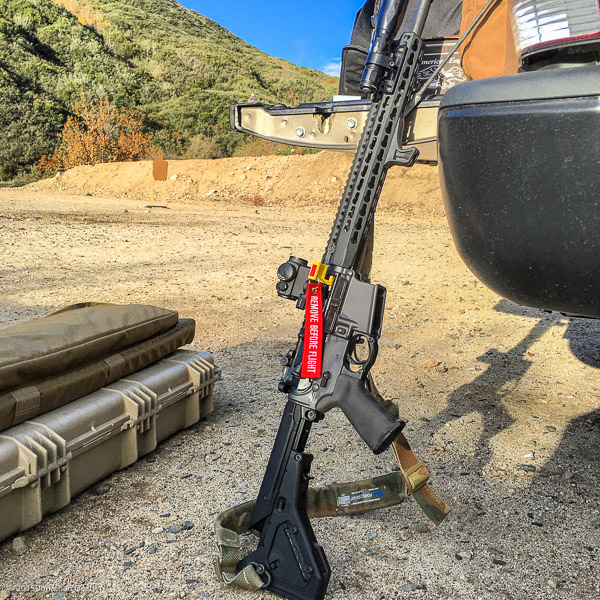
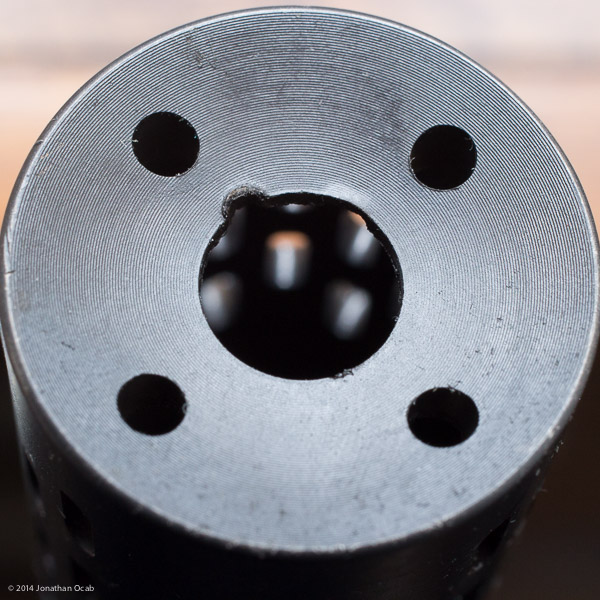
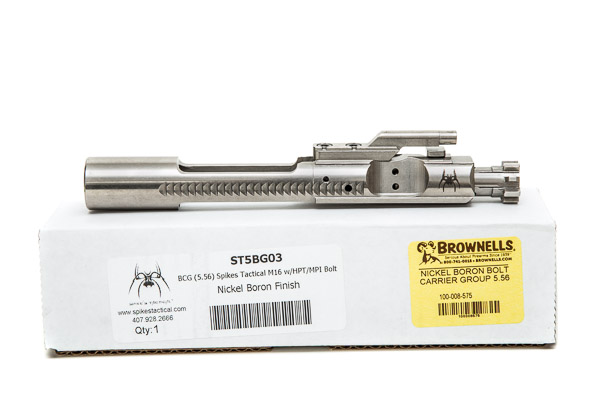
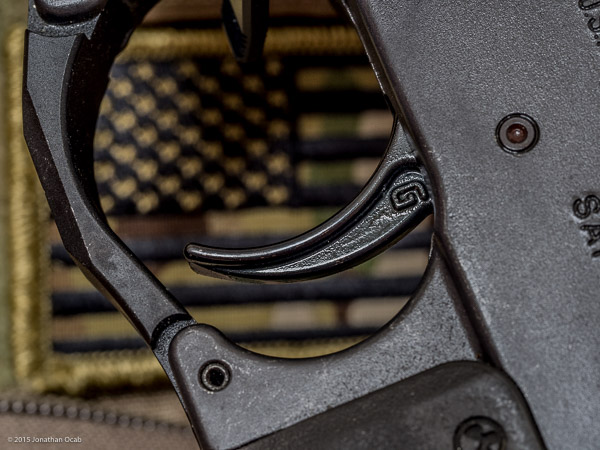
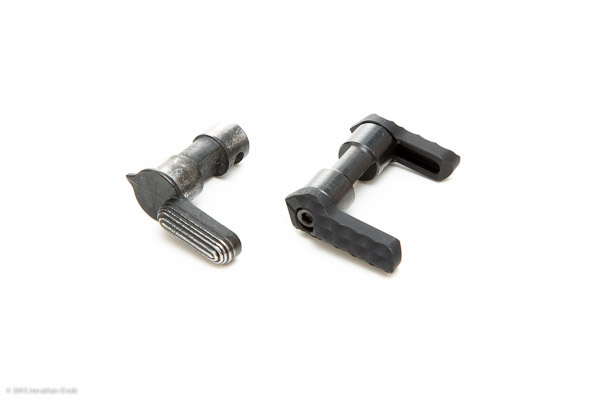
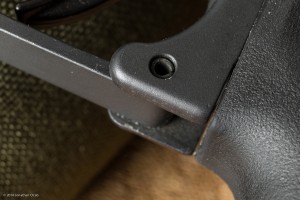
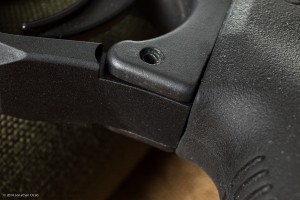
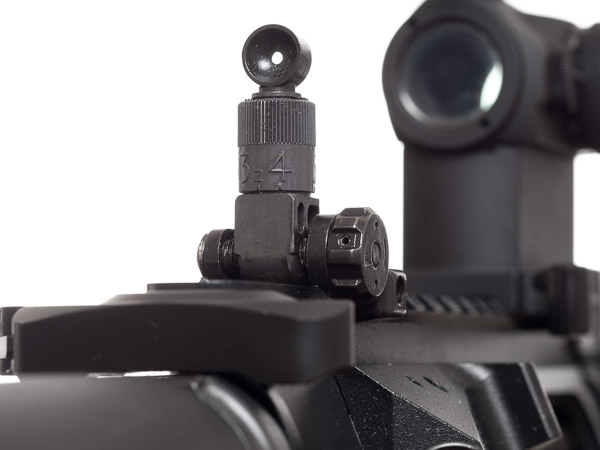
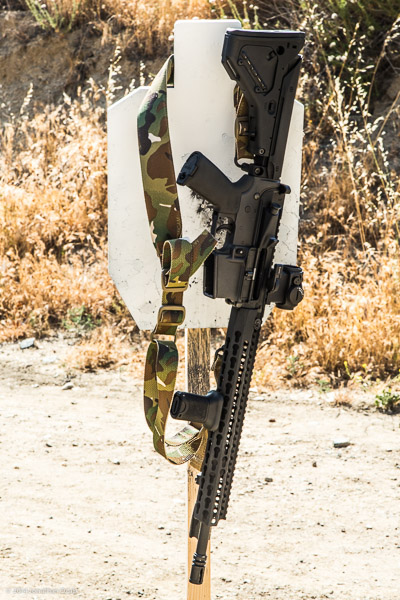
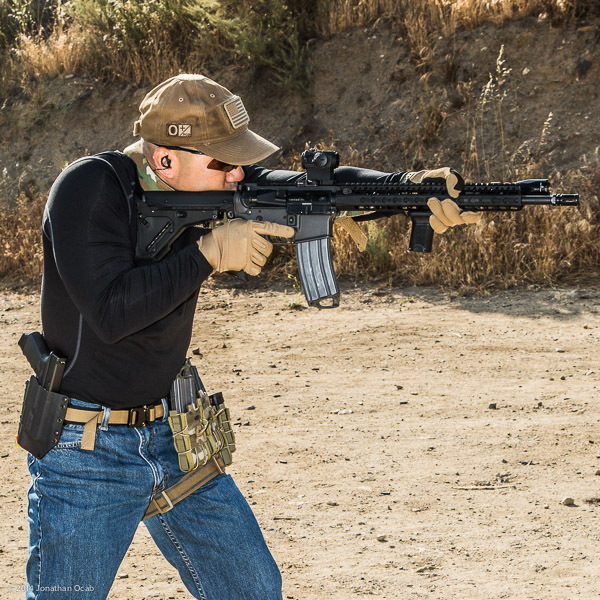
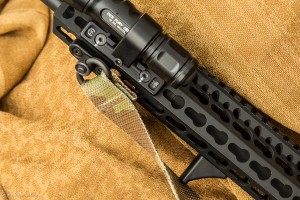
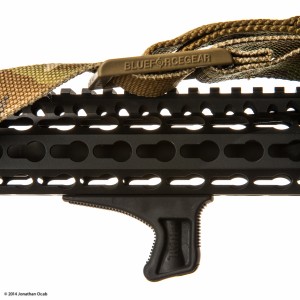
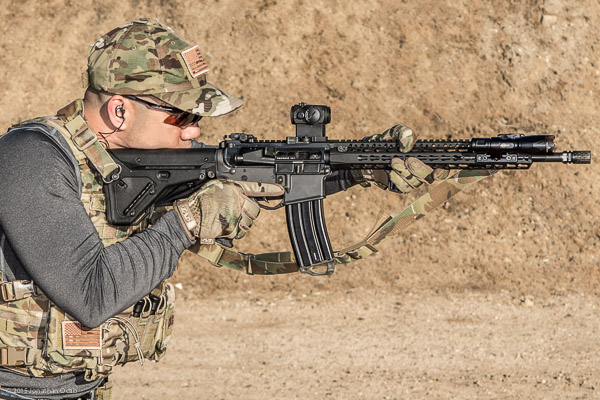
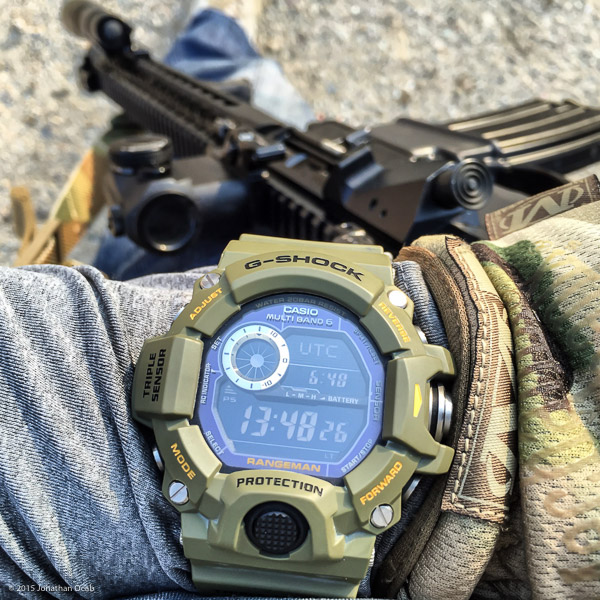
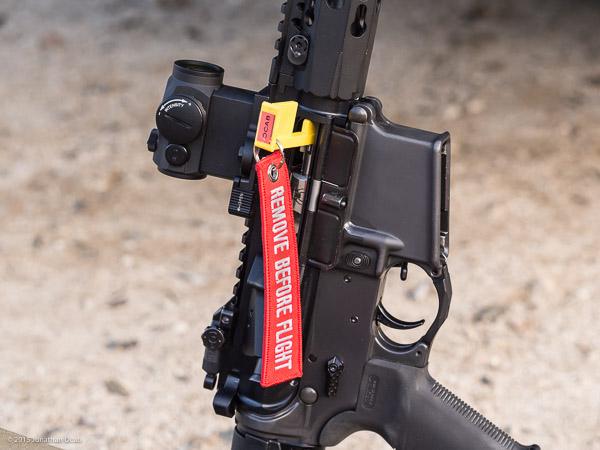
55gr 5.56 NATO and .223 Remington Ammunition Comparison – ocabj.net
[…] ammo was shot using my primary AR defensive rifle build, which utilizes a Bravo Company MFG 16″, 1-7″ twist, mid-length, Cold Hammer Forged, […]